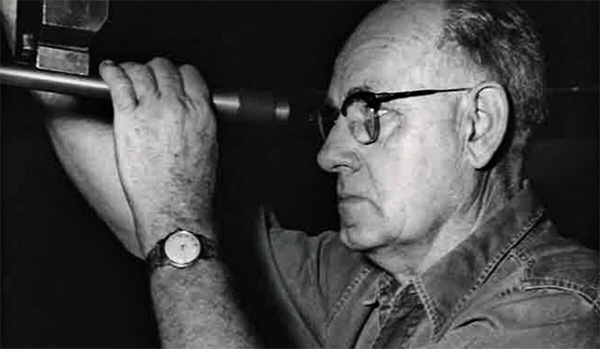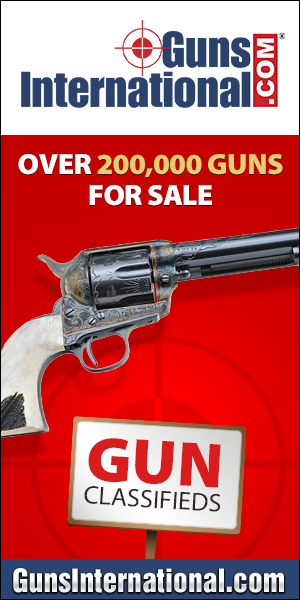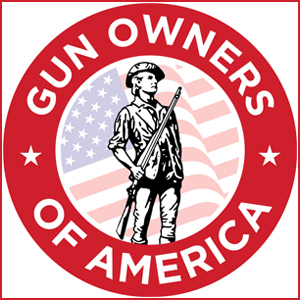P.O. Ackley was a great contributor to the world of firearms and cartridge design. A contributor to Guns & Ammo, he had a sharp wit and a sharper tongue. Let's take a look back on his legacy today.

In every era of the history firearms and shooting, there have been standout figures who defined the direction and development of the industry. Eliphalet Remington, Benjamin Tyler Henry, Oliver Winchester, John Marlin, Daniel Wesson, Hiram Maxim, Christian Sharps, Samuel Colt, John M. Browning and John C. Garand; these are a few examples of the inventors. Col. Townsend Whelen, Elmer Keith, and Jack O’Connor are examples of influencers of their time. One figure, Parker Otto Ackley, who went by “P.O.” for most of his life, isn’t thought of as frequently. However, beginning with his experience as a gunsmith in 1936, Ackley made numerous contributions to cartridge design and performance throughout his life. His work and ideas can still be seen today, more than 30 years after his death.
Allow me to offer a brief narrative of who P.O. Ackley was for readers who may not be familiar with him. Then, I would like to discuss certain ideas and philosophies about cartridge design and how they remain relevant. Through several of his quotes, we can understand how he really felt about the concepts and marketing. Plus, we’ll get some insight into his sharp wit.
Who Was P.O. Ackley?
P.O. Ackley was born in Granville, New York in 1903. He was raised on a farm and began shooting and working on guns at a young age. His interest in fire- arms continued while earning a degree in Agriculture in 1924 from Syracuse University, where he also took several engineering courses. After graduating from college, he started his own farm, married and started a family. His farm was successful, but the Great Depression eventually made it difficult for him to make a living. He sold the farm in 1936.
Ackley had become interested in a gun shop located in Roseburg, Oregon, and bought it. He packed up the family and moved West. He was quite successful at the gun shop and developed a passion for wanting to make barrels, eventually working out a deal with a friend who made barrels. Ackley even returned East for a year to learn from him. Then, he went back to Oregon to design and build his own deep-hole drilling and rifling machine. He started by making .22-caliber barrels, and quickly became known as a premier barrel maker.
Ackley’s plans were again interrupted, but this time by World War II. He went to the Ogden Army Ordnance Depot in Utah and was tasked with developing a repair program. (Elmer Keith served as an inspector at the same arsenal.) Again, his efforts were successful and resulted in a complete rebuild of the depot. After the war, Ackley bought a gun shop in Cimarron, New Mexico, and moved it to Trinidad, Colorado.
Many former military members were interested in using the G.I. Bill to learn gunsmithing when they returned home, so Ackley partnered with the Trinidad State Junior College (trinidadstate.edu) and started a gunsmithing school in 1947. To this day, it is considered one of the premier gunsmith schools in the world. But Ackley moved in 1951 to Salt Lake City where, again, he started his own gun shop and ran it until his passing in 1989.

During the course of his career, Ackley experimented with wildcat cartridges, and he was an avid hunter. His disdain for large-caliber magnum cartridges was evidenced by his keen interest in wild- catting high-performance .22-caliber cartridges for hunting. He even went so far as to design and make his own heavy-for-.22 controlled-expansion bullet, the design of which resembles many of today’s best hunting bullets. It had a solid-copper base with a drawn jacket ogive surrounding a 10-grain lead core.
Later in his career, Ackley did a considerable amount of writing. He was on the technical staff for Guns & Ammo from the October 1959 issue to October 1974, and he contributed to Shooting Times from 1960 to 1982. He also authored five books. During this time, he became known as “America’s gunsmith.”
Ackley’s Work & Views
Col. Charles Askins summed up Ackley about as well as anybody: “With a total interest in the shooting game, with a dedication and a devotion to rifles and their loads, the man had given countless hours, money and effort to the betterment of the existing American family of rifle cartridges. The debt of the shooters of this country to Parker Ackley is a major one.” Ackley had strong opinions about things he knew a lot about, and barrel making was certainly one of those things. He also had a sarcastic wit that cut to the core of issues, usually through the disdain of his critics. Ackley had some great lines about barrel making, with two choice examples I’d like to note in particular:
“I have been making barrels for 44 years or more and I don’t know half as much about it as someone who has been at it 4 years.”
“I have worked with .17-caliber barrels now for more than 25 years, and although I admit I don’t know very much about barrel making after more than 30 years at it, I do know that the best way to get an answer to the problem is to ask some- one who has never made a barrel. They can always tell you.”
As noted, Ackley was not a fan of huge overbore magnum cartridges that trended during his era. He was one who felt there were much more elegant and efficient ways to produce a useful high-performance cartridge. Some of his wildcatting was aimed at mocking those who thought huge powder capacity cases were the answer to a high- performance cartridge. As a joke, he developed a wildcat .22-caliber cartridge based on the .50 BMG case. He called it the “.22 Eargesplitten Loudenboomer.” In a more serious effort, Ackley, along with Guns & Ammo’s Robert Hutton, conducted an effort to legitimately design a cartridge based on the .378 Weatherby case that would produce 5,000 feet per second (fps). Though they didn’t get 5,000 fps, they came close. Had they had access to today’s propellants, they probably would have achieved their goal.
Ackley was not shy about poking fun at fans and gun writers who gushed about large capacity magnum cartridges: “Of course, these big ones make more noise, and they would be highly efficient if you could scare animals to death.”
“I don’t think Elmer Keith would be caught dead hunting with anything smaller than a .300 Magnum. And he used to tell me that was about mini- mum for deer. For other stuff, he starts up from there. Of course, if you figured things proportionately, guns for moose or bear; the gun would probably be at least 37mm,” and “… so inefficient that no one in his right mind could see anything good in them except sales possibilities."
“… It would be fine if by putting a belt on a case and advertising it as a magnum it would revolutionize the industry, but it only revolutionizes sales.” Suffice it to say, Ackley would probably not be impressed by many recent cartridges developed on large-capacity cases.
Ackley spent a lot of time experimenting with various rifle actions to determine their strength in real-world use, to dispel many urban legends about “weak actions.” He did much of this work during his time at Trinidad. He tested most of the military bolt-action rifles that saw use in World War I and II to destruction. He found, contrary to popular belief, that the Japanese Arisaka action was the strongest. Testing performed by the U.S. Army after his work verified his findings. He also tested the Winchester Model 94 action and found it was far stronger than what anyone thought. The action simply flexed under high pressure and sprang back.
What Ackley is perhaps best known for is his work with wildcatting. His Ackley Improved (AI) cartridges followed the design philosophy of minimum body taper and a sharp 40-degree shoulder. Most AI cartridges also moved the shoulder forward to end up with approximately a one-caliber-long neck. The result increased both case capacity and muzzle velocity. Many of the cartridges of his era had a lot of body taper and a rather shallow shoulder angle. This type of cartridge design results in a lot of case stretch and bolt thrust. Changing the design to minimum body taper and a steep shoulder results in a rapid adhesion of the body to the chamber walls under pressure and much less case stretch and bolt thrust. Ackley did not have access to the pressure testing equipment available today, and some of his loading data and velocity claims were optimistic. Still, his design approach was sound and ahead of its time.
Many of today’s newest and very popular cartridges follow his design philosophy, nearly to the letter. The 6mm and 6.5mm Creedmoor, 6.5mm PRC, the Winchester and Remington lines of short magnums, and the .300 PRC to name a few. The difference is that most of these new mass- produced cartridges use 30- to 35-degree shoulders to reduce scrap during production. A 40-degree shoulder is hard to mass produce without an unacceptably high scrap rate due to folds in the shoulder. Hornady’s .17 Hornet cartridge is essentially the Ackley Improved design, but with a 30-degree rather than a 40-degree shoulder. The .280 Ackley Improved is offered by both Nosler and Federal. The legacy of Ackley’s improved cartridge design is alive and well today.
Final Thoughts
Today, we tend to think that we have a much better handle on how things work because we have better technology than they did back in the day, and we must have learned from our predecessors. In my mind, P.O. Ackley’s work and accomplishments should humble us a little bit. Ackley was forward thinking and had an advanced understanding of firearms and cartridge design, even by today’s standards.
I leave you with one more quote from Ackley that shows the more things change, the more they stay the same: “When I sold the land out back, I intended to fix up the house. When we moved to Holiday in 1951 … taxes have gone up so much that I am just letting the joint fall down. If I do any work on it they will come around and reassess it. Like everywhere else we have a surplus of public parasites.”
Originally published by Guns and Ammo.
Check out the huge selection of Ammo for sale at GunsInternational.com.

In every era of the history firearms and shooting, there have been standout figures who defined the direction and development of the industry. Eliphalet Remington, Benjamin Tyler Henry, Oliver Winchester, John Marlin, Daniel Wesson, Hiram Maxim, Christian Sharps, Samuel Colt, John M. Browning and John C. Garand; these are a few examples of the inventors. Col. Townsend Whelen, Elmer Keith, and Jack O’Connor are examples of influencers of their time. One figure, Parker Otto Ackley, who went by “P.O.” for most of his life, isn’t thought of as frequently. However, beginning with his experience as a gunsmith in 1936, Ackley made numerous contributions to cartridge design and performance throughout his life. His work and ideas can still be seen today, more than 30 years after his death.
Allow me to offer a brief narrative of who P.O. Ackley was for readers who may not be familiar with him. Then, I would like to discuss certain ideas and philosophies about cartridge design and how they remain relevant. Through several of his quotes, we can understand how he really felt about the concepts and marketing. Plus, we’ll get some insight into his sharp wit.
Who Was P.O. Ackley?
P.O. Ackley was born in Granville, New York in 1903. He was raised on a farm and began shooting and working on guns at a young age. His interest in fire- arms continued while earning a degree in Agriculture in 1924 from Syracuse University, where he also took several engineering courses. After graduating from college, he started his own farm, married and started a family. His farm was successful, but the Great Depression eventually made it difficult for him to make a living. He sold the farm in 1936.
Ackley had become interested in a gun shop located in Roseburg, Oregon, and bought it. He packed up the family and moved West. He was quite successful at the gun shop and developed a passion for wanting to make barrels, eventually working out a deal with a friend who made barrels. Ackley even returned East for a year to learn from him. Then, he went back to Oregon to design and build his own deep-hole drilling and rifling machine. He started by making .22-caliber barrels, and quickly became known as a premier barrel maker.
Ackley’s plans were again interrupted, but this time by World War II. He went to the Ogden Army Ordnance Depot in Utah and was tasked with developing a repair program. (Elmer Keith served as an inspector at the same arsenal.) Again, his efforts were successful and resulted in a complete rebuild of the depot. After the war, Ackley bought a gun shop in Cimarron, New Mexico, and moved it to Trinidad, Colorado.
Many former military members were interested in using the G.I. Bill to learn gunsmithing when they returned home, so Ackley partnered with the Trinidad State Junior College (trinidadstate.edu) and started a gunsmithing school in 1947. To this day, it is considered one of the premier gunsmith schools in the world. But Ackley moved in 1951 to Salt Lake City where, again, he started his own gun shop and ran it until his passing in 1989.

During the course of his career, Ackley experimented with wildcat cartridges, and he was an avid hunter. His disdain for large-caliber magnum cartridges was evidenced by his keen interest in wild- catting high-performance .22-caliber cartridges for hunting. He even went so far as to design and make his own heavy-for-.22 controlled-expansion bullet, the design of which resembles many of today’s best hunting bullets. It had a solid-copper base with a drawn jacket ogive surrounding a 10-grain lead core.
Later in his career, Ackley did a considerable amount of writing. He was on the technical staff for Guns & Ammo from the October 1959 issue to October 1974, and he contributed to Shooting Times from 1960 to 1982. He also authored five books. During this time, he became known as “America’s gunsmith.”
Ackley’s Work & Views
Col. Charles Askins summed up Ackley about as well as anybody: “With a total interest in the shooting game, with a dedication and a devotion to rifles and their loads, the man had given countless hours, money and effort to the betterment of the existing American family of rifle cartridges. The debt of the shooters of this country to Parker Ackley is a major one.” Ackley had strong opinions about things he knew a lot about, and barrel making was certainly one of those things. He also had a sarcastic wit that cut to the core of issues, usually through the disdain of his critics. Ackley had some great lines about barrel making, with two choice examples I’d like to note in particular:
“I have been making barrels for 44 years or more and I don’t know half as much about it as someone who has been at it 4 years.”
“I have worked with .17-caliber barrels now for more than 25 years, and although I admit I don’t know very much about barrel making after more than 30 years at it, I do know that the best way to get an answer to the problem is to ask some- one who has never made a barrel. They can always tell you.”
As noted, Ackley was not a fan of huge overbore magnum cartridges that trended during his era. He was one who felt there were much more elegant and efficient ways to produce a useful high-performance cartridge. Some of his wildcatting was aimed at mocking those who thought huge powder capacity cases were the answer to a high- performance cartridge. As a joke, he developed a wildcat .22-caliber cartridge based on the .50 BMG case. He called it the “.22 Eargesplitten Loudenboomer.” In a more serious effort, Ackley, along with Guns & Ammo’s Robert Hutton, conducted an effort to legitimately design a cartridge based on the .378 Weatherby case that would produce 5,000 feet per second (fps). Though they didn’t get 5,000 fps, they came close. Had they had access to today’s propellants, they probably would have achieved their goal.
Ackley was not shy about poking fun at fans and gun writers who gushed about large capacity magnum cartridges: “Of course, these big ones make more noise, and they would be highly efficient if you could scare animals to death.”
“I don’t think Elmer Keith would be caught dead hunting with anything smaller than a .300 Magnum. And he used to tell me that was about mini- mum for deer. For other stuff, he starts up from there. Of course, if you figured things proportionately, guns for moose or bear; the gun would probably be at least 37mm,” and “… so inefficient that no one in his right mind could see anything good in them except sales possibilities."
“… It would be fine if by putting a belt on a case and advertising it as a magnum it would revolutionize the industry, but it only revolutionizes sales.” Suffice it to say, Ackley would probably not be impressed by many recent cartridges developed on large-capacity cases.
Ackley spent a lot of time experimenting with various rifle actions to determine their strength in real-world use, to dispel many urban legends about “weak actions.” He did much of this work during his time at Trinidad. He tested most of the military bolt-action rifles that saw use in World War I and II to destruction. He found, contrary to popular belief, that the Japanese Arisaka action was the strongest. Testing performed by the U.S. Army after his work verified his findings. He also tested the Winchester Model 94 action and found it was far stronger than what anyone thought. The action simply flexed under high pressure and sprang back.
What Ackley is perhaps best known for is his work with wildcatting. His Ackley Improved (AI) cartridges followed the design philosophy of minimum body taper and a sharp 40-degree shoulder. Most AI cartridges also moved the shoulder forward to end up with approximately a one-caliber-long neck. The result increased both case capacity and muzzle velocity. Many of the cartridges of his era had a lot of body taper and a rather shallow shoulder angle. This type of cartridge design results in a lot of case stretch and bolt thrust. Changing the design to minimum body taper and a steep shoulder results in a rapid adhesion of the body to the chamber walls under pressure and much less case stretch and bolt thrust. Ackley did not have access to the pressure testing equipment available today, and some of his loading data and velocity claims were optimistic. Still, his design approach was sound and ahead of its time.
Many of today’s newest and very popular cartridges follow his design philosophy, nearly to the letter. The 6mm and 6.5mm Creedmoor, 6.5mm PRC, the Winchester and Remington lines of short magnums, and the .300 PRC to name a few. The difference is that most of these new mass- produced cartridges use 30- to 35-degree shoulders to reduce scrap during production. A 40-degree shoulder is hard to mass produce without an unacceptably high scrap rate due to folds in the shoulder. Hornady’s .17 Hornet cartridge is essentially the Ackley Improved design, but with a 30-degree rather than a 40-degree shoulder. The .280 Ackley Improved is offered by both Nosler and Federal. The legacy of Ackley’s improved cartridge design is alive and well today.
Final Thoughts
Today, we tend to think that we have a much better handle on how things work because we have better technology than they did back in the day, and we must have learned from our predecessors. In my mind, P.O. Ackley’s work and accomplishments should humble us a little bit. Ackley was forward thinking and had an advanced understanding of firearms and cartridge design, even by today’s standards.
I leave you with one more quote from Ackley that shows the more things change, the more they stay the same: “When I sold the land out back, I intended to fix up the house. When we moved to Holiday in 1951 … taxes have gone up so much that I am just letting the joint fall down. If I do any work on it they will come around and reassess it. Like everywhere else we have a surplus of public parasites.”
Originally published by Guns and Ammo.
Check out the huge selection of Ammo for sale at GunsInternational.com.












